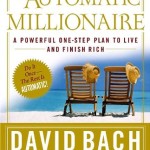 For starters, I hate most insurance products that purport to replace investment products. But I had not heard of longevity insurance until this week, so I decided to check it out.
For starters, I hate most insurance products that purport to replace investment products. But I had not heard of longevity insurance until this week, so I decided to check it out.
Here’s the concept: Pay a big lump sum to an insurance company now (before retirement), in order to draw on a hefty fixed income many years in the future – but starting past the age you might not live to see.
The idea – known as longevity insurance or a deferred annuity – is meant to fit a certain type of person concerned with running out of money in the mixed-blessing event that he or she lives long enough to outlive most of his or her savings. By deferring the income for many years, a lump sum can create a significant income-for-life in later years, alleviating the risk that retirement money completely runs out.
This recent Bloomberg article offers the example of a 60 year old man who pays $125,000 to New York Life today in order to draw nearly $45,000 a year, starting at age 80 – twenty years from now. This article says New York Life offers $17,614 guaranteed annual income after age 80 for a $50,000 premium.[1]

The article claims a retiree’s account must grow by an unlikely 11% to match the income available from this type of deferred annuity, without specifying exactly how that percentage was calculated.
You think this is the equivalent of 11% return?
11% return?
“Go ahead. Make my day.”
https://www.youtube.com/watch?v=cg-NNSEPClQ
I’ll use the latter Bloomberg article’s precise numbers later in this post to calculate what I think about all this, from a financial perspective.
To think about the numbers and the math behind longevity insurance, it’s helpful – regrettably – to think about the probabilities of death.
Stats about death probabilities
We know from Social Security’s actuarial tables that the risk of death between 60 and 80 – meaning in this case the risk of paying over a big lump sum and getting exactly nothing back – is significant.
The probability of death at any age each year rises, for a man[2], from about 1.1% for 60 year olds, to about 6% for 80 year olds. Combine the annual risk of death for every year between 60 and 80, and we can see – actually we know this instinctively, but still we can see – that this deferred annuity could end up worth zero.
The sum of all the one-year probabilities of death, for a man, between age 60 through age 79 is 54%, meaning that there’s a greater than 50% chance that the annuity income is never collected.
This all may seem morbid to talk about, but as my friend Clint says in The Unforgiven, “We all have it coming, kid.”
https://www.youtube.com/watch?v=XoAPKt7kbD0
Here are some other interesting and relevant, stats from the SS actuarial tables:
A 60 year old man has an expected life of 21.27 more years. This means the average man has just 1.27 years past age 80, on average, to receive guaranteed income from the longevity insurance annuity. Taken at face value, that seems like very few years, on average, to received guaranteed income after age 80.
Next, should that man make it to age 80, the expected life from that point onward is 8.1 years. That seems more palatable from a financial perspective, and instinctively the guaranteed income for 8 years sounds more reasonable. Below I will do some math, however, to move from ‘instinct’ to ‘calculation.’
Insurance for high-probability events
Now, the low probability of receiving ‘fair value’ for this annuity premium is not – in itself – a reason to avoid longevity insurance. Insurance, after all, can make sense even for low probability events.
I pay for home insurance against complete outlier events like devastating fires or meteor crashes, even though, chances are, these won’t happen in my lifetime. (quickly knocking wood).
But since living and dying are not outlier events, but rather guaranteed events with an uncertain time schedule, I have to consider only a part as insurance against the unknown and part as a straight-up financial investment around a known event, with adjustments for the probabilities of living a certain amount of time, within a limited range – e.g. greater than zero, and something less than 45, for a 60 year old man.
Calculating the returns of longevity insurance
So what does the financial return of longevity insurance look like?
We can use a combination of discounted cash flow and compound interest calculations to answer this question.
In the New York Life quote in the Bloomberg article cited above, a 60 year old man can pay $50,000 and receive an annual income of $17,614, guaranteed for life, starting at age 80.
I’ll cover 4 scenarios for this type of longevity insurance, plus 1 alternate scenario of not buying the insurance.
Clint says it best in A Fistful of Dollars: “Get 3 coffins ready. My mistake, four coffins.”
https://www.youtube.com/watch?v=KZ_7br_3y54
Scenario #1 – The 60 year old dies before age 80, receives no income
In this sad case, the insurance company pockets the $50,000 premium and pays out nothing in guaranteed income. Obviously, from a pure financial standpoint, this is a losing trade. Also, this will happen 54% of the time, for the average 60 year old considering this purchase.
The Outlaw Josey Wales says it best: “Dyin’ aint much of a living, boy. You know this isn’t necessary. You can just ride on.”
https://www.youtube.com/watch?v=Bigc7GXHU50
Scenario #2 – The average 60 year old man
Let’s say the man lives to the 60 year old’s average of 21.27 additional years, or 1.27 years past age 80.
That 60 year old man today can expect to collect $22,369.78 total in annuity income (that’s 1.27 * $17,614).
But that average future income is quoted in future dollars, so we need to know the present value of those dollars, discounted to the present day.
We use the discounted cash flow formula PV = FV / (1+Y)^N in which
PV = Present Value – That’s what we want to figure out.
FV = Future Value – That’s $22,369.78 in this example.
Y = Some assumed interest rate. Let’s say 5% because that’s close to where NY Life discounts retirement benefits for its employees, according to their 2013 financial statement.
N = Number of years. That’s 20 years in this example.
So plugging those number into the PV = FV/ (1+Y)^N formula, our present value tell us that the future income is worth $8,430.93
Since I’m paying $50,000 today to receive the equivalent value in today’s dollars of $8,430.93, I’m not particularly excited about the value of this product for the average 60 year old man in scenario #2.
The High Plains Drifter is keeping up with this math, so I hope you are.
“How ‘bout it stranger? Think you’re fast enough to keep up with us?”
“A lot faster than you’ll ever live to be.”
https://www.youtube.com/watch?v=vL2la06bUns
Scenario #3 – Today’s 60 year-old man lives to age 85.
Again, we will apply the discounted cash flow formula, but now we have 5 years’ worth of receiving a guaranteed annual income of $17,614. More palatable, I think. But let me see what the numbers say.[3]
To figure out the total value of this income – to a hypothetical 60 year-old man living to age 85 – we’ll need to add up the individual values of the annual incomes for each of the years. So, the sum of 5 PVs, using the same PV = FV / (1+Y)^N, just calculated 5 times.
Income Year #1 (through age 81):
FV = $17,614, Y = 5%, N = 20
So, PV = $6,638.53
Income Year #2 (through Age 82):
FV = $17,614, Y = 5%, N = 21
So, PV = $6,322.41
Income Year #3 (through age 83):
FV = $17,614, Y = 5%, N = 22
So, PV = $6,021.34
Income Year #4, (through age 84):
FV = $17,614, Y = 5%, N = 23
So, PV = $5,734.61
Income Year #5, (through age 85):
FV = $17,614, Y = 5%, N = 24
And so, PV = $5,461.54
At the end of all this – admittedly much easier to do and show in a spreadsheet – The total value in today’s dollars is $30,178.43, compared to the $50,000 premium required to receive this value.
Even living to age 85, I still much prefer the insurance company’s side of the deal rather than the hypothetical 60-year-old’s deal.
Scenario #4 – The 60 year-old man lives to age 90
I’m going to fast-forward on all the formula stuff, but in this case all that is required for your calculations is to discount the annual $17,614 by ten different discount rates. The total present value at the end of ten years of income is $53,824.03. This, finally, compares favorably to the $50,000 premium. So, from a purely financial standpoint, you start to get the positive side of the deal between years nine and ten after age 80. Enjoy!
Also, by then you’ll be this guy, gruffly shouting at his neighbors to “get off my lawn!”
https://www.youtube.com/watch?v=NelBNtNm8l0
This assumes, of course, that 5% is the right discount rate. In other words, can you achieve an after tax return of 5%, comparable to the discount rate? If you can achieve a better return in the market, then the breakeven is significantly longer than ten years. If you think you can achieve only a 2% return outside of this deferred annuity, then your breakeven point is between four and five years.
Alternate scenario
What about that “equivalent to 11% return” quoted in the Bloomberg article? First off, I have no idea how that’s possible, and the author of the article doesn’t say. My guess is that number came straight from New York Life, and the author made no attempt to reproduce those numbers. So, shame on him.
However, we can look at what happens if you invest the $50,000 in market securities at age 60 instead of purchasing a deferred annuity.
For that, we use the compound interest formula, which is just the inverse of the discounted cash flows formula: FV = PV * (1+Y)^N, where:
FV = Future Value – what we’re trying to calculate.
PV = Present Value – That’s $50,000 in our example.
Y = Some assumed interest rate. I’ll stick with 5% for consistency’s sake.
N = Number of years of compounding. N is 20 in our example, to get to age 80. And then we can look at larger Ns, for later years, as the invested amount continues to grow.
Our $50,000, invested in the market and returning a compounded 5% annual growth, becomes $132,665.
Which, if you might die before age 80, you’re significantly better off than if had you paid that $50,000 as a lump sum to New York Life at age 60.
Now, to take income from that $132,665 at age 80 you’ll need to decide at what rate to draw it.
If you decide to withdraw 10% of the total every year – and assuming an after-tax 5% return as well – then at the end of ten years you’ll still have $70,204 left. You’ll also draw a declining income between $13k and $7.5K. That income isn’t great, but you’ll actually have some wealth you can still call your own at age 90, which can be something useful.
If you decide instead to withdraw the fixed $17,614 per year – to match the annuity assumption – again we see that the break-even is between years nine and ten, with one significant difference: There’s money left over for heirs if you die at any time between age 80 and 90 when you invest it yourself, rather than convert it to an annuity. With an annuity, there’s no money left over, ever.
Insurance companies and financial journalists generally don’t want to talk about the poor returns of their investment products.
Which kind of puts me in the mindset of certain elderly gentleman in Detroit, “You ever notice how you come across somebody once in a while you shouldn’t have fucked with? That’s me.”
https://www.youtube.com/watch?v=ny6SJCNUzqY
In sum
I don’t know. Obviously I started out as an insurance-product skeptic, and this exercise did not convince me otherwise. From the math I’m looking at, the vast majority of people would do better by investing their own money for retirement rather than turning over lump sums to an insurance company to receive unlikely income of dubious, low value.
I’ve addressed the pure-finance angle, but some people want total certainty, and they crave a fixed income for life with no risk.
The rest of us, I think, should live with the gamble.
In the end, I must turn again to Dirty Harry to summarize.
Knowing the break-even point is between nine and ten years of guaranteed income for your life past age 80 in the example quoted by New York Life, you have a clear calculation to make.
Now, I know what you’re thinking.
“Will I live 10 more years past 80, or only nine?”
To tell you the truth, in all this excitement, I’ve forgotten myself.
So you have to ask this yourself question:
Do I feel lucky?
Huh punk? Do you?
Please also see related posts on:
Calculating Discounted Cash Flows
Insurance I – Risk Transfer Only
Insurance II – The Good, The Optional, and The Bad
Insurance III – Life Insurance As An Investment
Ask an Ex-Banker – Should I buy an Annuity?
Compound Interest – The Most Powerful Force in the Universe
[1] The article also mentions a few technical details. The US Treasury has recently made longevity insurance more viable by allowing up to either 25% or a maximum of $125,000 in retirement accounts to invest in deferred annuities like this. Longevity insurance makes up less than 1% of the market right now for insurance, but may grow as insurance marketing kicks in, and the US Treasury rule which began in January 2014 ‘normalizes’ the product.
[2] I’m going to just use the calculations for a man, because it makes it easier for me and the Bloomberg article did not give a price quote for longevity insurance for a woman. We can assume, however, that the income payout will be somewhat lower for a woman, because women live longer on average and the insurance companies will adjust their income payouts accordingly.
[3] I’m going to belabor this point by showing all of the discounted cash-flow math, because the highest wish of my life is that Bankers Anonymous readers will follow along with spreadsheets to see how useful discounting cash-flows can be to understanding finance. So – humor me?
Post read (4480) times.
 I spoke this afternoon on the BBC NewsHour show, along with the author of a think tank publication advocating “Virtuous Banking.” The whitepaper can be downloaded from Res Publica’s site here.
I spoke this afternoon on the BBC NewsHour show, along with the author of a think tank publication advocating “Virtuous Banking.” The whitepaper can be downloaded from Res Publica’s site here.









